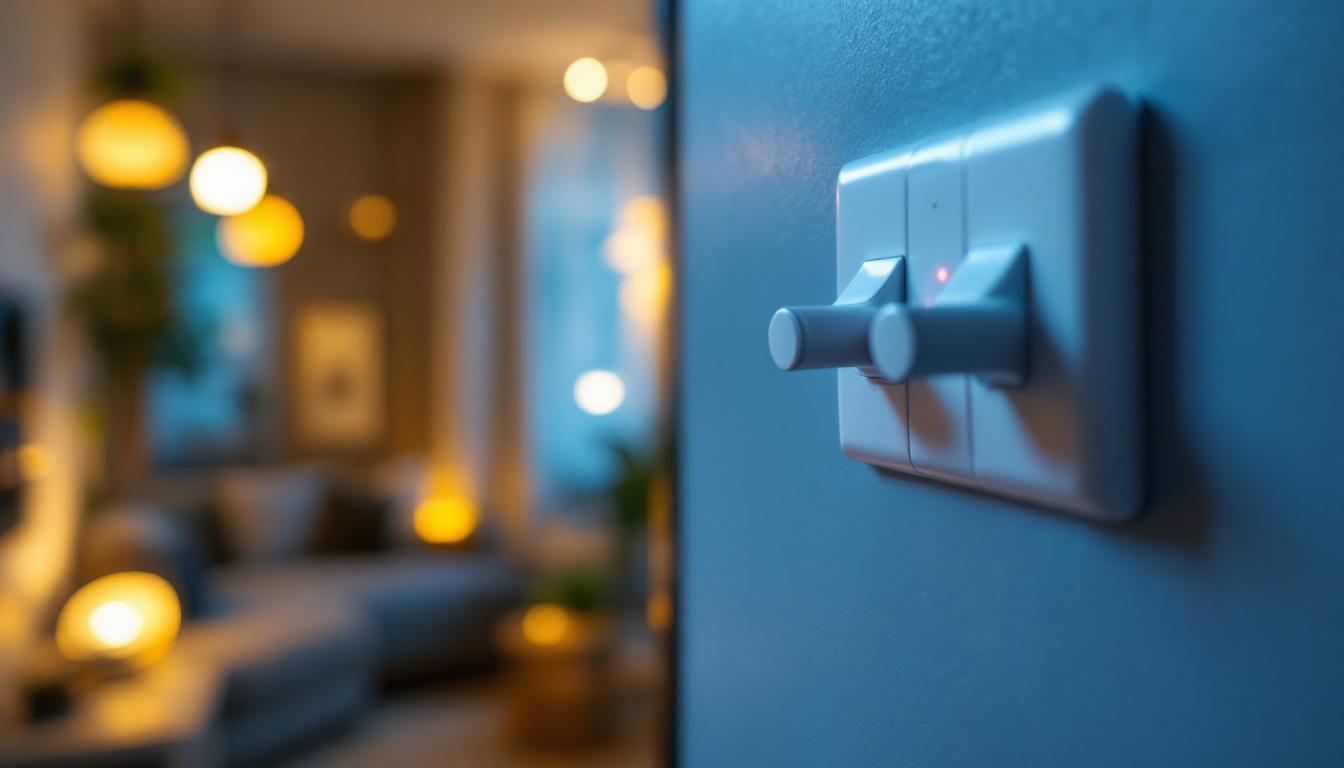
In the world of electrical installations, understanding the nuances of lighting controls is essential for every lighting contractor. Among the various types of switches, the 3-way switch stands out as a critical component in creating versatile lighting solutions. This article delves into the science behind 3-way switches, their functionality, and practical applications, providing valuable insights for lighting contractors.
A 3-way switch is a type of electrical switch that allows control of a single light fixture from two different locations. This is particularly useful in larger spaces, such as hallways, staircases, or large rooms, where it is inconvenient to walk back to the original switch to turn off the lights. The design of a 3-way switch facilitates a more flexible approach to lighting control.
Unlike a standard single-pole switch, which only controls a light from one location, a 3-way switch features three terminals. Two of these terminals are connected to traveler wires, while the third terminal connects to the light fixture. This configuration allows for the switching of the light on and off from either location, enhancing user convenience and energy efficiency.
Understanding the components of a 3-way switch is crucial for effective installation and troubleshooting. The primary components include:
The operation of a 3-way switch is based on the principles of electrical circuits. When one switch is toggled, it either completes or breaks the circuit, allowing or preventing current from reaching the light fixture. The traveler wires carry the current between the two switches, enabling either switch to control the light.
For instance, if the first switch is in the “on” position and the second switch is toggled to “off,” the light will turn off. Conversely, if the second switch is turned “on,” the light will illuminate again. This back-and-forth control mechanism is what makes 3-way switches a popular choice in multi-entry spaces.
In addition to their practical applications, 3-way switches can also contribute to energy savings. By allowing users to control lighting from multiple points, they reduce the likelihood of leaving lights on unnecessarily. This can be particularly beneficial in homes with children or elderly residents, where ease of access to light switches can enhance safety and comfort. Furthermore, the installation of dimmer switches in conjunction with 3-way switches can provide even greater control over lighting levels, allowing homeowners to create the perfect ambiance for any occasion.
Moreover, 3-way switches are not limited to traditional incandescent bulbs; they can also be used with modern LED lighting systems. This compatibility makes them an excellent choice for energy-efficient homes. As technology evolves, smart 3-way switches have emerged, allowing for remote control via smartphones or voice-activated devices, further enhancing the convenience and functionality of lighting systems in contemporary living spaces.
Wiring a 3-way switch can be a straightforward process, but it requires careful attention to detail to ensure safety and functionality. The following steps outline the basic wiring procedure:
Before starting the installation, gather the necessary tools and materials:
1. **Turn Off Power:** Safety is paramount. Always turn off the power at the circuit breaker before beginning any electrical work.
2. **Identify the Wiring Configuration:** Determine the existing wiring setup. Typically, there will be a power source, two traveler wires, and a wire connecting to the light fixture.
3. **Connect the First Switch:** Attach the common terminal of the first switch to the power source. Connect the traveler wires to the traveler terminals. Ensure all connections are tight and secure.
4. **Connect the Second Switch:** At the second switch location, connect the common terminal to the light fixture. Attach the traveler wires to the corresponding terminals. Again, ensure all connections are secure.
5. **Grounding:** Connect the ground wire to the ground terminal on both switches to ensure safety.
6. **Test the Circuit:** After completing the wiring, turn the power back on and test the switches to ensure they operate correctly.
3-way switches are unique in that they allow for control of a single light fixture from two different locations, making them particularly useful in hallways or large rooms with multiple entrances. This setup not only enhances convenience but also improves the overall functionality of the lighting system in your home. When you flip one switch, it changes the path of the electrical current, allowing the light to turn on or off regardless of the position of the other switch. This versatility is why 3-way switches are a popular choice in residential wiring.
Additionally, it’s important to note that while the wiring process may seem simple, understanding the electrical principles behind 3-way switches can greatly aid in troubleshooting any issues that arise. For instance, if a light fixture fails to operate correctly, checking the connections at both switches and ensuring that the traveler wires are properly installed can often resolve the problem. Familiarizing yourself with the wiring diagram for 3-way switches can also provide clarity and confidence as you undertake this project, ensuring that you can achieve a successful installation with ease.
Even experienced contractors may encounter issues when working with 3-way switches. Understanding common problems and their solutions can save time and enhance efficiency. Proper troubleshooting not only helps in resolving immediate concerns but also aids in preventing future complications that could arise from improper installations or overlooked details.
If the light does not turn on or off as expected, check the following:
In addition to these checks, consider the age of the switches and the overall electrical system. Older homes may have outdated wiring that does not meet current electrical codes, which could lead to issues with compatibility and performance. If the switches are particularly old, replacing them with modern, more reliable models could not only solve the problem but also enhance safety and efficiency.
Intermittent operation can be frustrating. This issue may arise due to:
Additionally, environmental factors such as humidity and temperature fluctuations can affect the performance of electrical components. If your switches are located in areas prone to moisture, like basements or bathrooms, consider using weather-resistant switches to mitigate these issues. Regular maintenance checks can also help identify potential problems before they escalate, ensuring a more reliable lighting system.
If the switches do not operate as intended, double-check the wiring configuration against standard wiring diagrams. It is essential to ensure that the traveler wires are connected correctly to the corresponding terminals on each switch.
Moreover, when troubleshooting incorrect wiring, it can be beneficial to label wires during disassembly. This practice not only simplifies the reassembly process but also minimizes the risk of errors. If you’re unsure about the wiring configuration, consulting a professional electrician can provide peace of mind and ensure compliance with local electrical codes, ultimately safeguarding your home from potential hazards associated with faulty wiring.
While the basic functionality of a 3-way switch is straightforward, there are advanced applications that can enhance the lighting experience in various settings. Understanding these applications can help lighting contractors offer more comprehensive solutions to clients.
With the rise of smart home technology, smart 3-way switches have become increasingly popular. These switches allow for remote control of lighting through smartphones or voice-activated devices. Smart switches can integrate with home automation systems to provide enhanced control and energy efficiency.
Installing smart 3-way switches typically involves the same wiring principles as traditional switches, but with the addition of a Wi-Fi or Bluetooth connection. This technology allows users to create schedules, dim lights, and control lighting from anywhere, making it an attractive option for modern homes.
In commercial environments, 3-way switches can be utilized to control lighting in large spaces such as conference rooms, auditoriums, and warehouses. The flexibility of controlling lighting from multiple locations enhances convenience and can contribute to energy savings.
In these settings, it is vital to consider the overall lighting design and how 3-way switches can be integrated with other lighting controls, such as dimmers or occupancy sensors, to create a comprehensive lighting solution.
Combining 3-way switches with other control mechanisms, such as dimmers or timers, can provide enhanced functionality. For instance, using a dimmer switch in conjunction with a 3-way switch allows for adjustable lighting levels from multiple locations.
Additionally, integrating timers can automate lighting schedules, providing convenience and energy savings. This combination of controls can be particularly beneficial in residential settings, where users may want to customize their lighting experience.
Understanding the science behind 3-way switches is essential for lighting contractors looking to provide comprehensive lighting solutions. From basic wiring techniques to advanced applications, mastering the functionality of 3-way switches can enhance the quality of installations and improve client satisfaction.
As technology continues to evolve, staying informed about the latest advancements in lighting controls will enable contractors to offer innovative solutions that meet the needs of modern clients. Whether working on residential or commercial projects, the 3-way switch remains a fundamental component in creating flexible and efficient lighting systems.
By applying the knowledge and techniques discussed in this article, lighting contractors can enhance their expertise and ensure successful installations that align with industry standards and client expectations.
Ready to elevate your lighting installations with the highest quality switches and controls? Look no further than LumenWholesale for all your lighting needs. Our extensive collection of spec-grade lighting products is designed to meet the rigorous demands of any project, big or small. With unbeatable wholesale prices and the convenience of free shipping on bulk orders, you can trust us to provide the best value without any hidden costs. Don’t compromise on quality or price—choose LumenWholesale for reliable, high-performance lighting solutions. Visit us today and discover how we can help you achieve lighting excellence for your clients. Wholesale Lighting at the Best Value.

Discover how Lightinh revolutionizes the lighting industry by offering innovative solutions that save contractors both time and money.

Discover the insider secrets of lighting contractors in “Light With Control: Lighting Contractors’ Secrets to Master.” Unveil techniques to optimize ambiance, enhance energy efficiency, and transform spaces with expert lighting strategies.

Discover essential best practices for lighting contractors looking to harness the power of solar lights with solar panels.

Explore the transformative role of address lights in modern lighting solutions, highlighting their functionality, aesthetic appeal, and technological advancements that enhance home visibility and curb appeal.